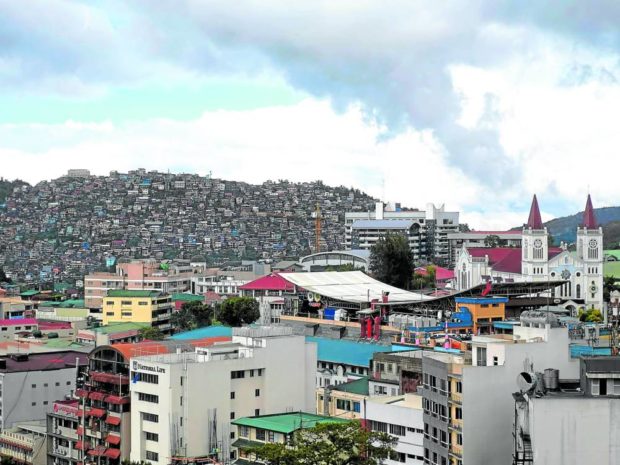BAGUIO CITY, Benguet, Philippines —The 2020 national census, which was undertaken in the first year of the COVID-19 pandemic, may have inadvertently reduced the national tax share of small Baguio communities whose residents left the city to escape the lockdowns, the city council learned in its session on Monday.
Because population is one of the basis for computing tax allocations, two barangays in the city’s university belt found their National Tax Allotment (NTA) cut substantially this year and will likely suffer diminished tax shares until either a middecade 2025 census is done or the next mandatory census of population and housing is completed in 2030.
The direct impact of the “pandemic census” on the NTA appeared to be peculiar to Baguio, which is a university town as well as the Cordillera’s economic center, according to the Philippine Statistics Authority (PSA). But other areas in the Cordillera have questioned their lower census figures in 2020, the agency said.
The 2022 NTA represents all of the taxes collected in the country, unlike the previous Internal Revenue Allotment (IRA), and has been described as a financial cushion for local governments that are climbing out of the COVID-19 economic downturn.
More funds
Baguio, for example, has been granted an NTA of P1.344 billion, which is a 38-percent increase from its previous IRA.
Its NTA makes up half of Baguio’s financial sources for its P2.3-billion budget for 2022, along with P115 million in revenue shares from the Baguio City Economic Zone, and over P800 million in local taxes and other fees, based on a budget report.
But Councilor Betty Lourdes Tabanda filed a resolution last month urging the city budget office to source out augmentation funds for Barangays New Lucban and ABCR (named after its main roads: Andres Bonifacio, Caguioa and Rimando) which are receiving much lower NTA compared with other villages.
New Lucban’s NTA share has been reduced by P17,000, said Budget Officer Leticia Clemente, citing the impact of a census drop from 1,697 residents in the 2015 census to 685 (or a 1,012 reduction) in 2020.
ABCR is losing P158,300 this year because of the lower NTA when its population dropped from 3,305 in 2015 to 2,070 (or a 1,235 reduction) in 2020.
Census takers found empty boarding houses and other accommodation facilities in these villages because students and transient workers returned to their home provinces, Villafe Alibuyog, director of the PSA in the Cordillera, said in an interview on Tuesday.
By law, the census must be undertaken every 10 years and may not be redone, she said.
Expected
Alibuyog said concerns about low census figures had been expected after the 2020 Luzon lockdown and the subsequent quarantines restricted public movement and closed all schools and most businesses, except for essential industries.
Baguio’s population grew from 345,366 in 2015 to 366,358 in 2020, but that figure could have been higher had the pandemic not broken out, she said.
Reports about a rapid drop in population have also emerged in some barangays in the neighboring town of La Trinidad, Benguet’s capital.
RELATED STORY
Baguio business owners hit high taxes amid pandemic
